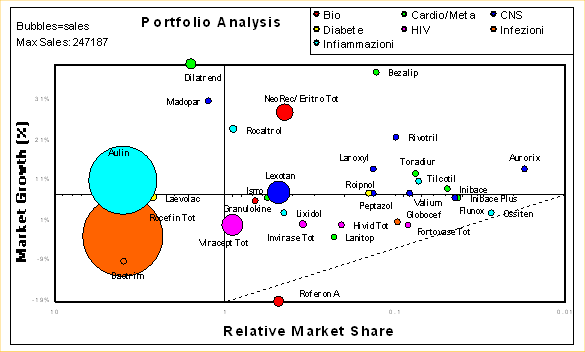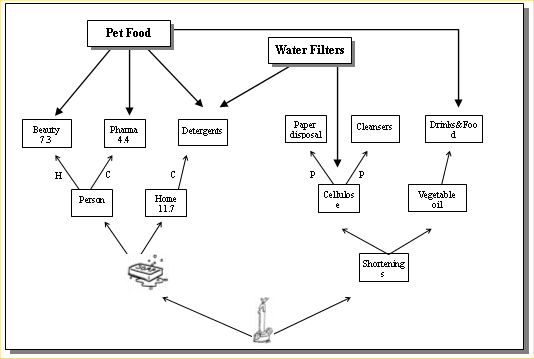Lessons from Procter & Gamble Product
Portfolio Analysis
By MarketingStat
How can we anticipate our direct competitor’s next addition to their product portfolio? We’d like to make a contribution, but how do we get past the obstacles we find ourselves stuck at, in generating creative scenarios with the small amount of data available?
There is no single best approach to this challenge. But, when speculating on future moves of any management team, the combined use of CI and pure quantitative analytical methods is the preferred route at MarketingStat. Company culture and past experience play an important role when making such decisions and hold lessons to be learned about future possibilities.
In 1995, for instance, P&G’s CEO John Pepper said they were going
to double sales by 2005 thanks to internal growth and acquisitions. In 1999,
when they recognized this goal was not going to be met,
Durk Jager succeeded
Pepper and some brands were sold, 10 production plants were shut down worldwide,
and two new acquisitions were made. IAMS/Eukanuba, a producer of pet food,
and Engineering Recovery, a producer of water filters, entered the
P&G had experienced a season of under-performing product launches. Pepper said the markets in the 90’s were not yet ready for products that were too innovative. Nevertheless, their investment in R&D grew up to $1.6Bn, twice as much as Gillette, a company with a good technological image. Their level of prescriptiveness decreased in favor of a more experimental approach. P&G was changing its attitude toward risk to accelerate decision-making processes, and they decided to do so by resourcing it to already-consolidated company know-how, as we shall see. In light of what’s been written by Prahalad and Hamel on Core Competence[1], there was room for major changes at P&G. Those were not signs of cost reduction due to financial matters, but rather moves toward compacting energies and re-focusing product offerings around the company’s strengths.
Up to this point, even a simple (and inexpensive) news review could have helped to hypothesize a major change was going to happen. The tough job was that of defining the boundaries within which our target might have made its next move. They are great marketers, and we know they only tackle markets with high potential. But now they were also concentrating around what they could defend, such as their acquired know-how. Why? Why were they massing forces? Where were they supposed to achieve superiority?
Sticking to the low-budget intelligence approach, one could have found new analytical insight using a few more quantitative approaches, such as any of the most commonly-used portfolio models. In 1981 Wind and Mahajan[2] reviewed strengths and weaknesses of the seven most popular models. The Share/Growth Matrix (BCG) and the Business Assessment Array (McKinsey/GE) is the combination of tools that would suit our case. The former allows investigating product portfolios made up of products already on the market, while the latter works as well for products not yet launched. Both tools can be used together to understand the consistency of a company’s cashflow, according to the competitive position of each brand in the product portfolio.
The drawback with these analyses is that, although the input data can be found (sales, market growth, etc.), they require tedious computations using mind-numbing formulae in Excel. Tools like MM4XL from www.MarketingStat.com (click to download) can save you hundreds of hours, and they draw meaningful reports and neat maps; in some cases they also interpret results.

Picture 1: Example of Share/Growth (BCG) Product Portfolio Matrix
When drawn dynamically, these maps can help sort out core businesses from peripheral ones. They can help when speculating about resource allocations, they can help in figuring out whether one portfolio can sustain management’s ambitions (re: Pepper in 1995), and more importantly they can foster strategic reasoning about viable product portfolio evolutions.
At P&G everything started with candles; then moved in two primary directions: soap and shortenings. The latter opened the door to the food arena with vegetable oil, while the former allowed expansion into both household and personal segments. Then came the paper. So, where would you find contiguity between water filters and the P&G’s portfolio? And what about pet food? They know nothing of pets. The picture below may help you solve the rebus.

Picture 2: P&G Product Segment Portfolio
The contiguity is in their technological knowledge of hair, calcium, and cellulose, respectively. Recovery Engineering (water filters) was “just” another acquisition contiguous to the paper segment used as a hook to a future major problem: water scarcity. The pet market is the big strategic challenge of the decade at P&G. Not really because of its size alone (large, about $35B.) but rather for the R&D implications that such a business may offer them. Nowadays, pets and human beings have a lot in common. Teeth, hair, skin, bones, and household at least. Know-how developed with pets may spin-off both personal and health care sectors, which represent one-third of P&G’s revenue, and may also have a strong impact on household, another third of revenue.
In order to get short-term results, they have already exported concepts from
personal care to pets (plaque control for dogs with Eukanuba). I would expect
them to start a whole bunch of lab tests with pets (presumably cruelty-free
ones) aimed at bringing short-term results in both hair and teeth businesses.
This research, however, will be directed at finding revolutionary solutions
in the medium-run. Swiffer’s electrostatic
formula stemming out of R&D is an encouraging sign of a return to the
labs, as they did already for soap and toothpaste. Beside the pet market
they have then put Clairol, a leading
Feeling trapped in the “marketing management concept” they have created, Proctoids want to find competitive advantage again in the technical performance of their brands, which is what makes the benefit really unique and defendable in the long run. They have the courage to attack themselves with the goal in mind of revolutionizing the way they bring new concepts to market. Should the strategy work, they might be in a position to differentiate their future communication from the diffused noise (thanks to innovative product performance), and they might also be in the position of getting rid of the annoying “great marketers “ fame in favor of a more technological company image. We speculate, indeed, it is also for this reason that they keep one foot in the pharmaceutical industry. They are far too attracted to scientifically driven innovation, so profitable and elegant.
In the original question, it was asked how to make a contribution. Well, I suggest you set the boundaries of the situation first, then you justify each stage from the financial side using methodologically sound techniques (such as portfolio analysis), while ultimately seeking the strategic logic suggested in the reasoning. Only then can you start the guesswork about the next product entry into your direct competitor’s portfolio.
I agree, one could have made a long list of possible options of contiguous markets and at the time of the acquisition announcement still be struggling with making a choice. Speculating on future strategic moves, however, is an art of scientific evolution. The combined use of facts and figures as well as logic and common sense can help in effectively circumscribing the range of options available. Some companies might start looking to probabilistic scenarios with increasing interest rather than single-shot bullets; but this is another story.

MarketingStat
Copyright
MarketingStatÓ
Correspondence to:
ReaderCall@MarketingStat.com
The Analysis Toolbox Preferred by Business Decision-Makers
is a brand of MarketingStat
www.MarketingStat.com